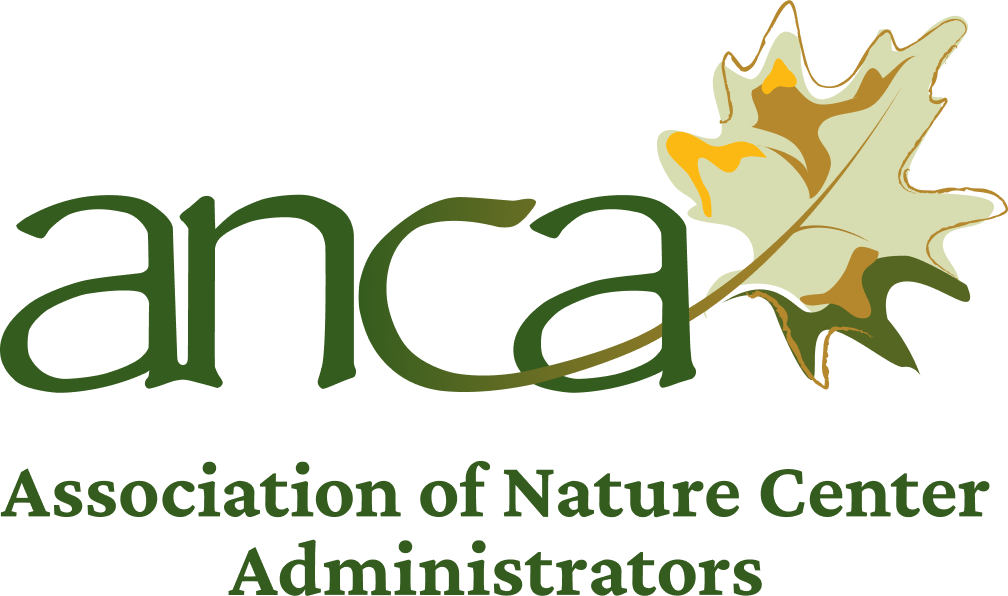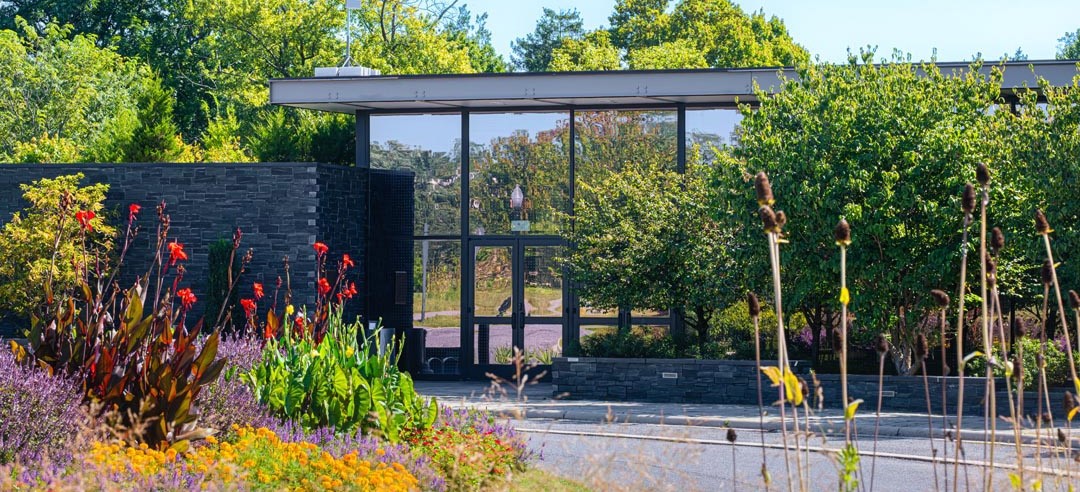by Courtney Belew, Marketing Manager at Decorative Films
At nature centers across the country, glass architecture offers beauty and light — but it also poses an invisible threat to the wildlife these spaces aim to protect.
And just like that, autumn arrives — ushering in a season of transformation. Trees exchange their vibrant greens for a palette of amber, rust, and gold, while a new season settles into the air, carrying the earthy fragrance of cooling rains and fallen leaves. With these signs of fall comes one of nature’s grand finales: the great migration south, as countless birds take to the skies, tracing time-worn routes toward warmer horizons.
But as these travelers embark on their instinctual journeys, the landscape below bears the unmistakable mark of human design. Birds and people have always shared the same environment, but today those shared spaces are increasingly shaped by glass — skyscrapers, shopping centers, and homes that cut across migratory flyways. To humans, glass offers a way to experience nature from within, blurring the boundary between inside and out. But for birds, that transparency can be fatal, transforming reflections of sky and trees into invisible barriers.
The Unseen Cost of Clear Views
At Cylburn Arboretum, an ANCA member whose grounds serve as a resource-rich flyway for more than 170 native and migratory bird species, this bird strike challenge became an opportunity for innovation.
Nestled in Baltimore City, the 200-acre nature preserve is a forested oasis in a densely populated metropolis — and one of the city's most beloved recreational spots. With 50 acres of cultivated gardens and nearly 150 acres of mature forest, Cylburn’s landscape offers food, shelter, and water for migrating populations, making it a haven for both birds and birdwatchers.
“Our community may not see a lot of the birds they see here in their yards; they may see birds here that they’ve never seen before,” said Melissa Grim, Baltimore City’s Chief Horticulturist. “If you're a city resident, you don't have to hike all the way to somewhere else to birdwatch. The birds bring value to individuals, but they also bring value to our park by attracting people to our gardens.”
As visitors enter the park, they’re greeted by the Vollmer Center — Cylburn’s headquarters for operations and primary event venue, which accounts for nearly half of all on-site rentals. Trailblazing in its original design, the Vollmer Center was one of the city's first “green buildings,” featuring composting toilets, green roofs, and geothermal heating and cooling. Constructed with nearly 4,000 square feet of glass, it offered panoramic views of the park’s lush, diverse landscape — an architectural masterpiece that proved lethal to local and migratory birds.
“The doors to this building opened in 2010. By 2011, we were starting to collect data on the bird strike issue here,” said Christina Nutile, Park Administrator at Cylburn Arboretum. “During migration season, I was hearing and seeing between six and ten birds strike the glass within the eight hours that I was here each day. Protecting birds is high on our list of conservation goals that we need to be focused on.”
The Vollmer Center’s design embodied the paradox perfectly — its transparency celebrated the surrounding landscape even as it endangered it.
Tragically, Cylburn’s bird strike problem is far from unique. Recent studies suggest that glass collisions cause more than one billion bird deaths every year in the United States alone (American Bird Conservancy, 2024). This toll is second only to domestic cats. Nearly 40% of these deaths occur at low-rise buildings five stories or less, with residential homes accounting for almost half (Loss et al., The Condor, 2014).
“The most common myth is that all birds are hitting skyscrapers,” said Lindsay Jacks, Executive Director of Lights Out Baltimore, a volunteer-run nonprofit that records strike frequency in the city. “In reality, the majority strike low-rise buildings and residential homes. If everyone took steps to treat just one or two windows, we could make a drastic difference.”
And while preventing collisions is essential to protecting bird populations, the impact extends far beyond biodiversity loss. “Birds are kind of like a canary in the mine,” said Joe Corcoran, President of the Baltimore Bird Club, a local nonprofit with offices at Cylburn Arboretum. “You start losing enough population of birds, and that becomes an indicator that our whole ecosystem is falling apart. A weak population of birds is a sign of a poor ecosystem. And eventually that’s going to affect humans through air pollution, water pollution, and crop-killing insects.”
WHY DO BIRDS STRIKE GLASS?
Fly-Through: Birds see the landscape beyond glass but don’t perceive the barrier.
Reflection: Glass mirrors trees and sky, creating the illusion of open space.
Distraction: Night-migrating birds navigate by moonlight; artificial lights draw them off course.
An Unforeseen Consequence
With nearly 70% of the building constructed of glass, the Vollmer Center is celebrated for its sweeping views of the surrounding park from almost every room — a feature that has made it one of Baltimore’s most sought-after event venues. “People love being in this building because of that indoor-outdoor experience,” said Nutile.
But the same glass that connects guests so beautifully to nature also created unforeseen environmental challenges: glass collisions and soaring energy bills from solar heat gain.
Early efforts to prevent strikes included installing corded curtains outside the windows and planting trees along the façade to create visual barriers. When collisions persisted, film solutions were explored — but securing funding for a newly constructed facility proved difficult. “The building was cutting-edge and designed to be ecologically in tune with its surroundings, but it was before bird strike glass was popular, or even a possibility,” said Brooke Fritz, Executive Director of Cylburn Arboretum Friends.
Cylburn’s team had already seen how patterned glass could dramatically reduce collisions; their new Nature Education Center, completed in 2024, featured fritted glass that performed exceptionally well. But the Vollmer Center couldn’t be rebuilt — it needed a retrofit. “We learned from the Vollmer Center that we needed to do bird protection with the glass, and that was really high on the list of priorities for the Nature Center,” said Grim. “We needed to retrofit this building in a way that would serve the same purpose and look virtually the same.”
Solar Heat Gain: A Hot Topic
Although the Vollmer Center’s glass was engineered to reduce solar heat gain, its extensive exposure and limited shade made temperature control a constant challenge. Sitting at the edge of a manicured meadow, with three sides exposed to open fields, the building absorbed heat faster than it could reject it. During the summer months, the HVAC system strained to keep up — driving up costs and maintenance demands while undermining the building’s sustainable design goals.
While the issue of bird strikes reflected the park’s conservation values, it wasn’t enough on its own to secure funding. What ultimately caught the city’s attention were the building’s steep energy bills and HVAC maintenance costs.
“We analyze buildings with high utility bills, and when we see buildings like the Vollmer Center at the top of the list, we say, ‘Something’s wrong here,’” said Frank Lee, Architect and Building Energy Auditor for Baltimore’s Department of General Services (DGS). “Buildings with glass walls get solar heat gain in the summer, which contributes to peak loads in July and August when residents are using the most electricity. We look for opportunities to cut peak load and reduce vulnerability in the grid by making the building more efficient.”
Recognizing an opportunity to lower costs and reinvest taxpayer dollars, DGS contacted Cylburn about installing solar film with available energy grant funding — but Cylburn’s focus had already turned to bird strike film. As retold by Nutile, “DGS reached out to me initially, asking if I wanted solar heat gain film on the building; they had a contract and some funding available. I said, ‘I do… but what I really want is some bird strike film.’ Then I got a call from Decorative Films about a product that had both.”
Decorative Films’ Breakthrough: Solar Bird Safety Film
The challenge of funding bird safety film wasn’t new to Decorative Films. “The conversation often starts with good intentions,” said Aaron Lotinsky, Director of Sales and Product Strategy at Decorative Films, “but when funding becomes the barrier, projects stall before they can make an impact. While funding for energy-saving solutions like solar rejecting film is common, there just aren’t many funding opportunities for bird strike prevention as a standalone problem.”
Seeing an opportunity to merge two needs, the company developed an innovative solution: a patterned solar control window film that reduces strikes by making glass visible to birds while simultaneously lowering energy bills. The pattern, subtle from the inside yet visible to birds, maintained the Vollmer Center’s hallmark panoramic views.
Being based just 40 miles away in Frederick, Maryland, Decorative Films had long been aware of Cylburn’s challenges — and saw a perfect fit for their new product. Now, after years of searching for a solution, the park found its answer in Solyx® BSF-DB35 Solar Bird Safety Film, an energy-saving solar film that delivers measurable ROI while significantly reducing bird collisions.
“To protect birds, we have to be mindful of the dangers we’re creating for them,” said Lotinsky. “We know glass collisions are a leading cause of bird fatalities, yet the problem is not widely addressed in standard building practices. Our solar bird safety film is the only product on the market that empowers existing buildings to protect birds by covering exterior glass while improving building performance and sustainability. It's a true win for birds and tenants alike.”
The film’s dotted TruEtch™ pattern — tested and approved by the American Bird Conservancy (TF Rating 20; learn more at abcbirds.org) — provides critical visual markers for birds while remaining virtually invisible from the interior. “The day after the film was installed, I drove by and couldn’t even see it,” said Grim. “Sitting in the lobby, I didn’t notice the dots — it didn’t take away from the big vista of glass windows. While I wish we'd been able to put bird-safe film up sooner, I think waiting until the right product came along worked out really well.”
Finding Funding: A Solution With True ROI
Within months, Cylburn secured over $47,500 in funding — 83% from city and state solar energy grants and assistance programs, including Baltimore City Departments of General Services and Recreation and Parks, the Maryland Department of Natural Resources, and the Maryland Environmental Administration, with the rest from the Baltimore Bird Club Memorial Fund. More than 3,000 square feet of glass was retrofitted with solar bird safety film, with immediate results.
In the first three months following the June 2024 installation, the building experienced zero bird strikes — a drastic decline from the dozens of strikes experienced in the same period the previous year. The HVAC system ran efficiently all summer, eliminating the need for the three to four maintenance calls it typically required. “I’ve seen it and felt it work. Just putting my hand next to the glass, the temperature is noticeably about a quarter of what it used to be,” said Nutile.
Though the film will save hundreds of birds each migratory season, the true ROI lies in the taxpayer dollars now redirected toward other city programs. The tally: an estimated 10,500 kWh saved annually — roughly $1,500 in energy costs — plus $2,100 in BGE rebates. If rates hold, the film could potentially return more than $36,000 over the next decade.
The Future Is Bird Safety Film
The success of the Vollmer Center retrofit is more than a local achievement — it’s a glimpse into the future of sustainable design. What began as an urgent need to protect birds and reduce energy costs has become a model for how cities, conservationists, and innovators can create buildings that truly coexist with nature. Across the industry, awareness is growing that these challenges are deeply interconnected — and that the path forward demands both creativity and accountability.
“We’ve dramatically improved the longevity and operating costs of the building by making the glass more resilient, while also saving birds and reducing summer peak loads. This was a permanent solution for the whole building,” said Lee.
Lotinsky agrees: “Architects and building owners are realizing bird strike prevention is no longer optional. It’s becoming a required consideration for new and retrofit glass buildings.”


